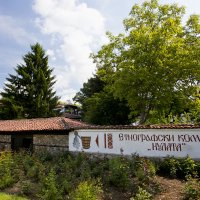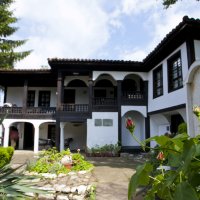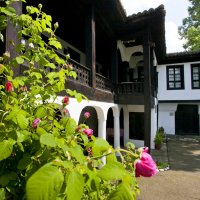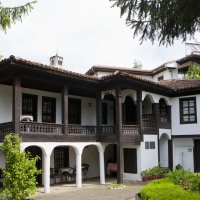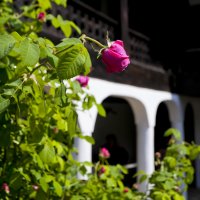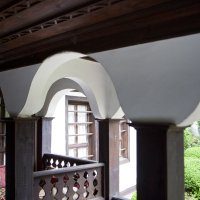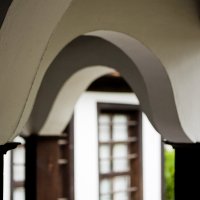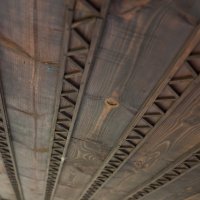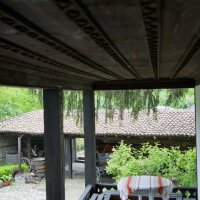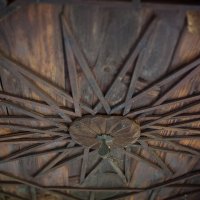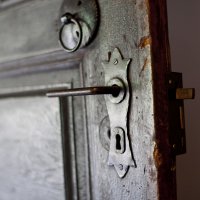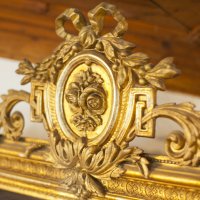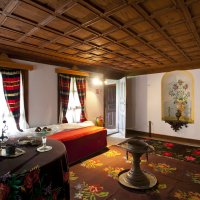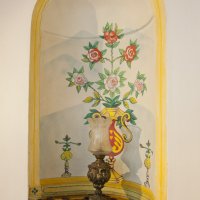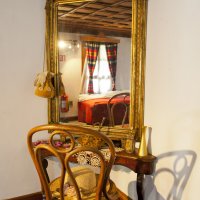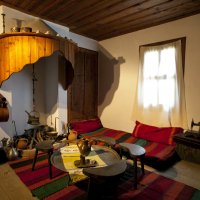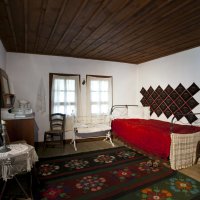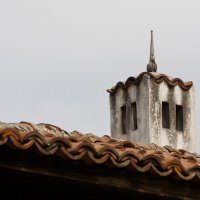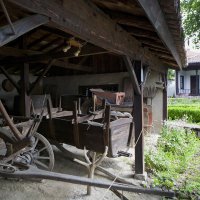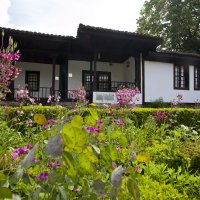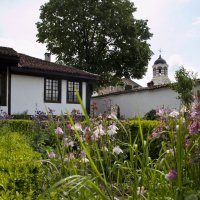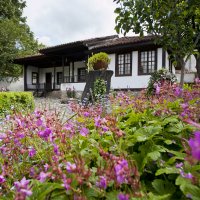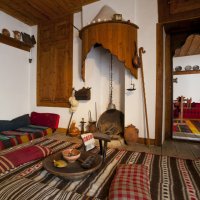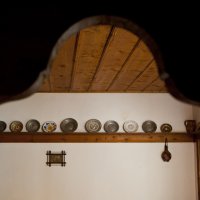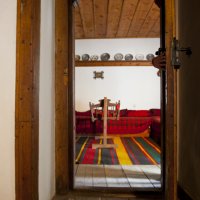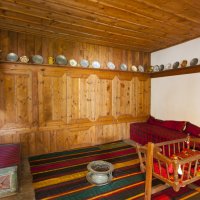Ethnographic complex
The ‘Kulata’ ethnographic complex is part of the ‘Iskra’ historical museum. The complex was founded in 1976 and includes two houses that represent the region’s town and village lifestyles. The ‘Town lifestyle’ house belonged to the famous Kazanlak public figure, merchant and donator Ivan Hadzhienov. Architecturally speaking, the house has no resemblance in the town. It is famous for its columns on the first and second floors that form arches. The house was built in the 19th century by master-builders from Triavna. It is a two-floor, asymmetrical house with an open balcony. On the first floor there is a separate cabinet and a closet, a long open balcony and a celler. On the second floor one can find the living premises – a bedroom, a kitchen with a closet and a guest-room.
During the house’s restoration the original arches of the balcony, the wood-carved ceilings, the railings and the panel dooks were preserved. The interior repsesents a mixture of village and town lifestyles from the 19th century, together with imported fabrics and furniture. A primitive rose-distillery, that depicts the rose-picking magic, is also available.
The ‘Village lifestyle’ house is a one-floor house with two rooms – a kitchen and a guest-room, together with an open balcony with a kiosk. It represents the sub-Balkan architecture from the end of the 18th century and the beginning of the 19th century. In the yard one can find a penthouse with farm equipment.
Visitors to the Ethnographic complex are offered additional attractions – rose-distillery presentation, testing of essential oils, degustation of culinary products from oleaginous roses.
Inside a restored premise one can find instruments related to a specific local craft – oil-extraction. Such extraction of oil (sharlan) from walnuts distinguished Kazanlak’s economy in the 19th century.
